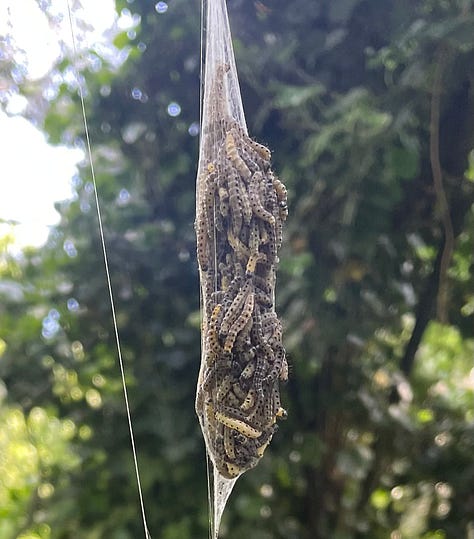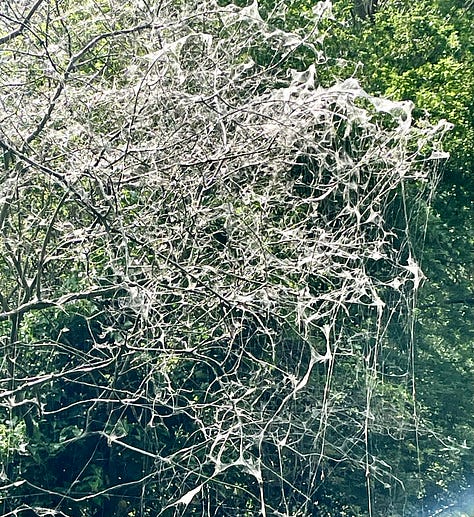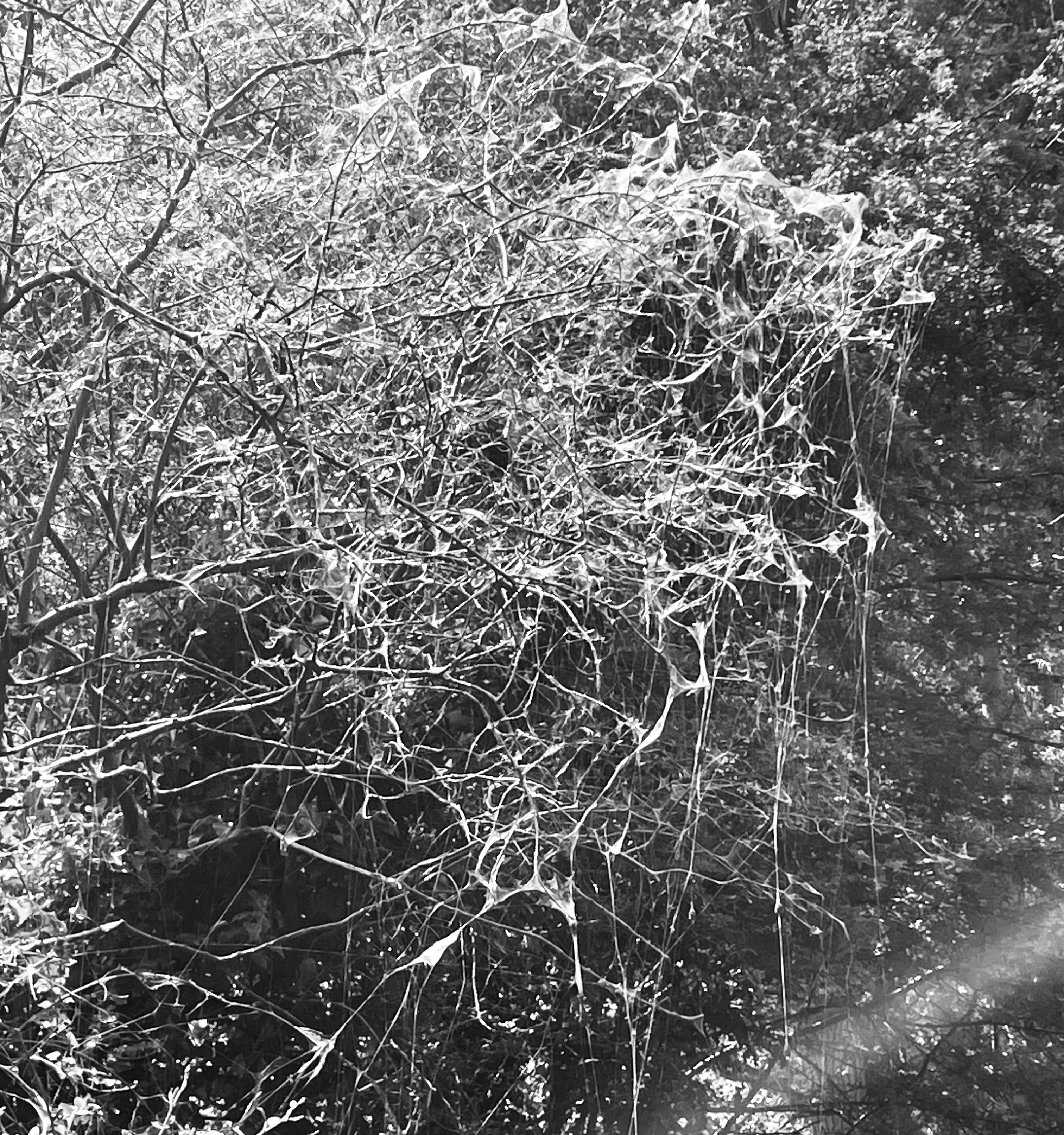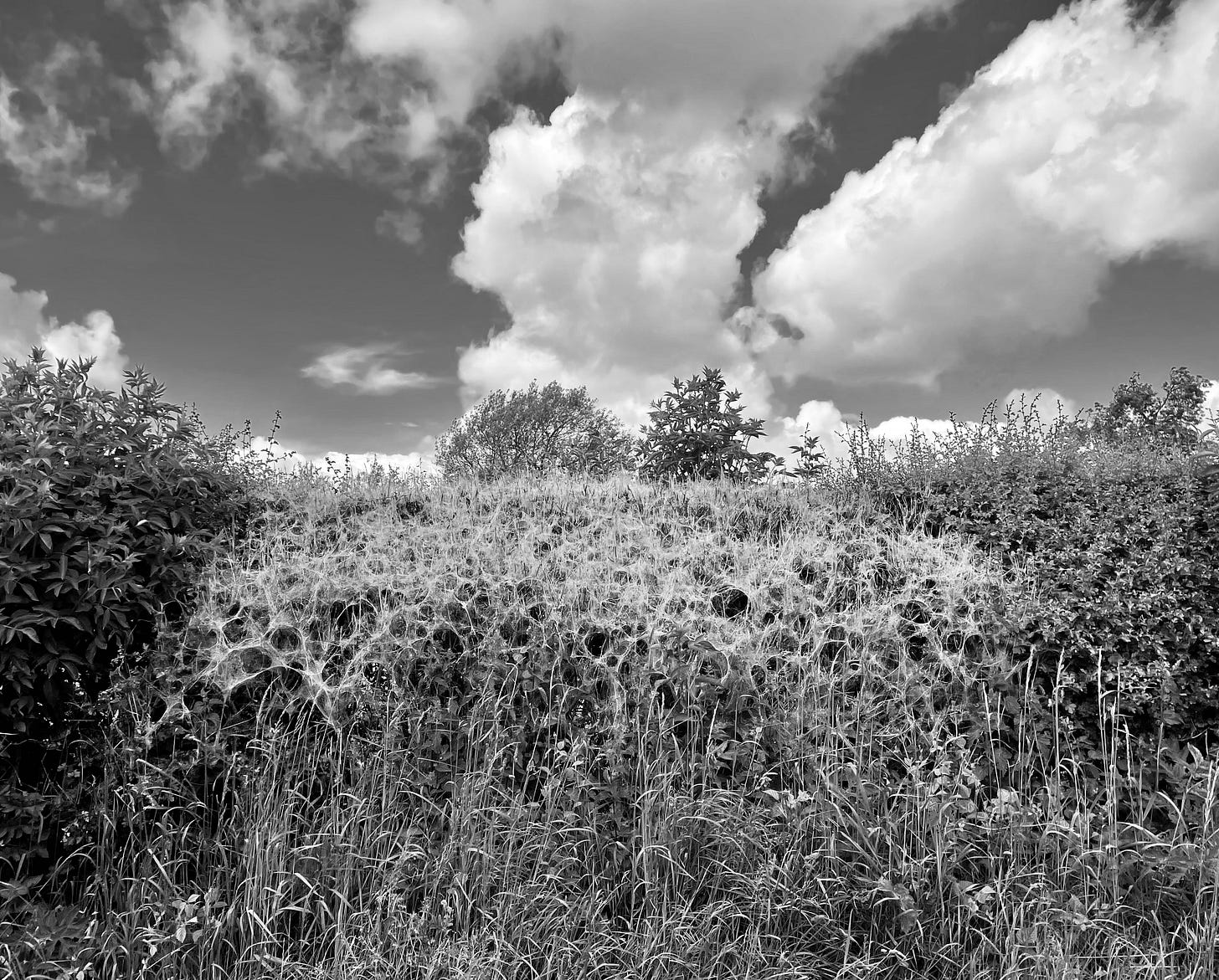The Creepy Tree
May
We have drifted into a Halloween aesthetic this month. East of the village, a single tree lurches out of the hedge, reaching its thin arms into the lane. Like a witch’s spindle, it secretes long, twisted cobwebs. Dare to look closer, and these threads hold bundles of writhing bodies, waiting to be cast into some wild and awful spell.
This is the fairy-tale appearance of the ermine moth caterpillers, the dramatic entrance that, every year, brings shivers of horror and then beguiles me. The creepy tree is a new spin on the story. I am more familiar with the ermine moths’ ghosting of hawthorne hedgerows. Their caterpillars craft these extensive webs to protect themselves from predators while they feed and form chrysalises. Although the effect looks devastating for the local foliage, their host trees and bushes will soon recover.



I’m always taken aback by the sight and can’t help but associate the idea of species possession and tightly packed cocoons with uncanny tales. But it is a magical thing that should remind us of the phenomenal wonder and strangeness of the natural world. The moths will soon emerge and flit through the air, like sparks from cauldrons.



